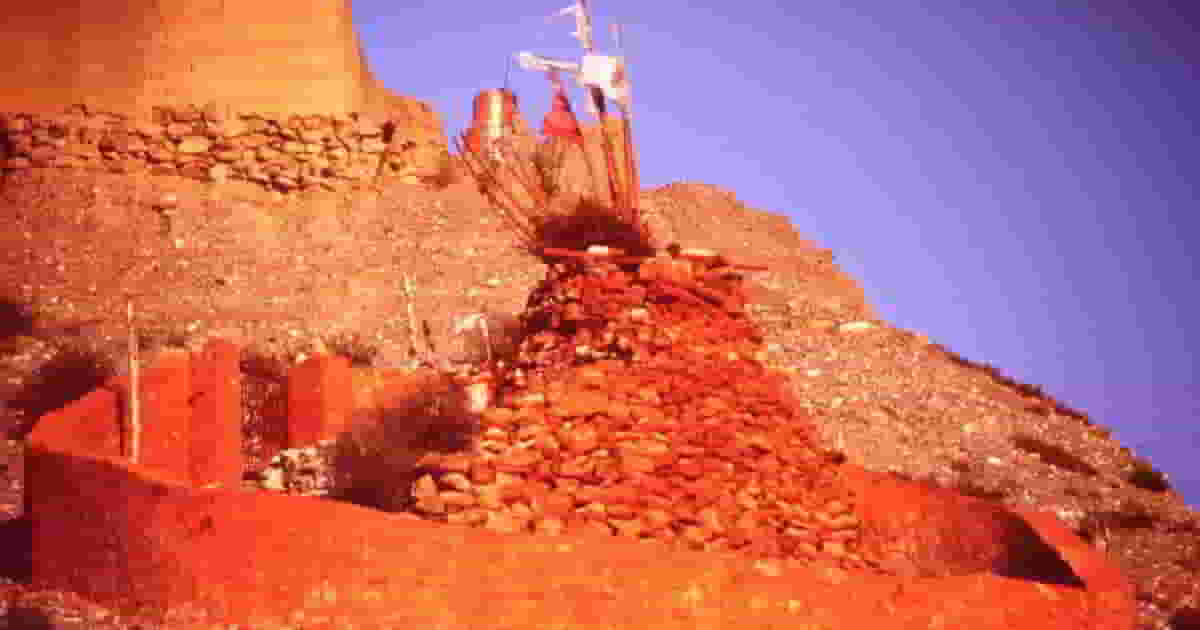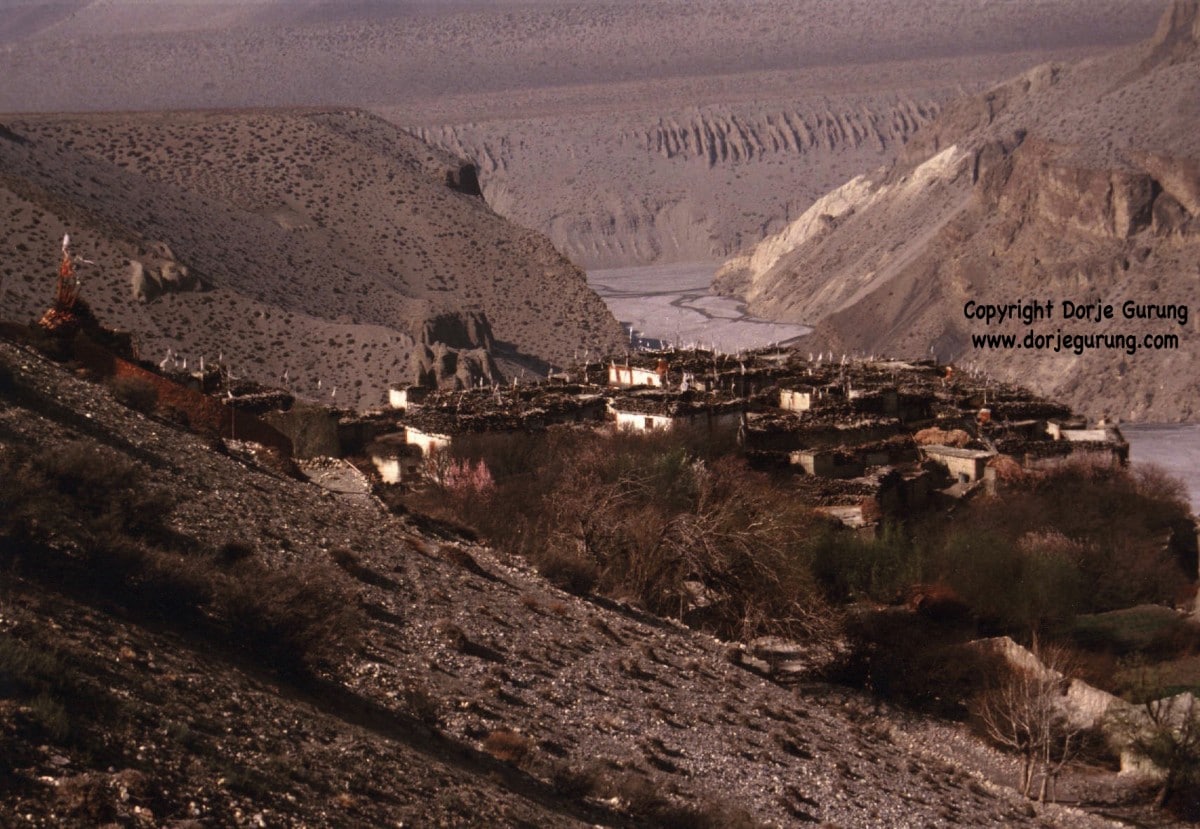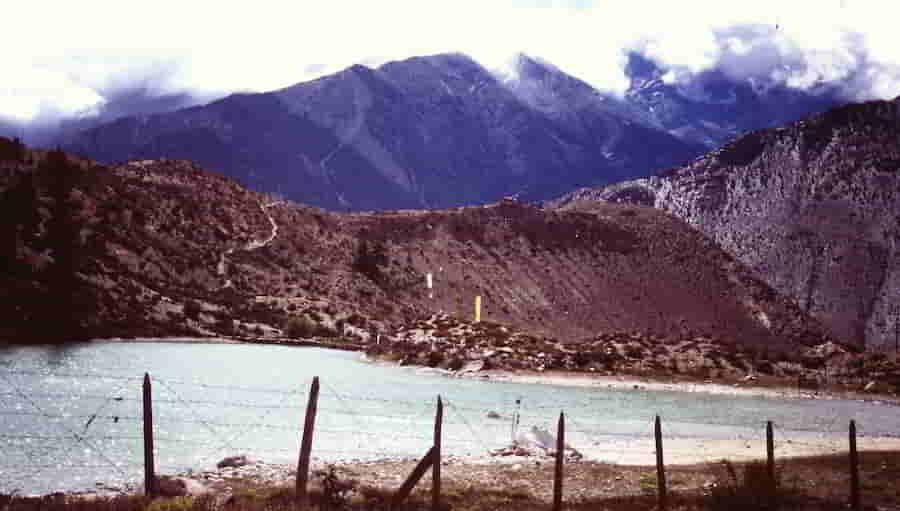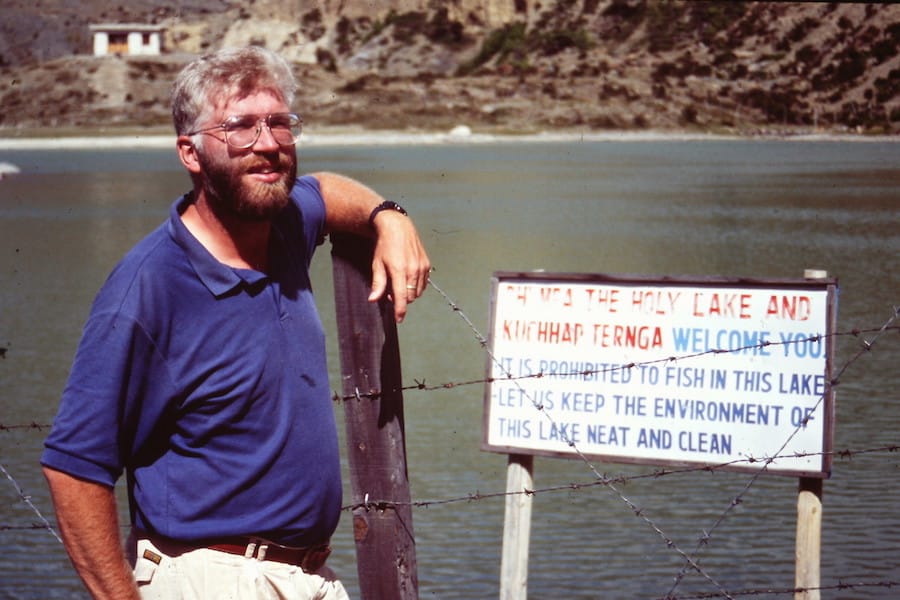
This is part two of the presentation I made at Red Cross Nordic UWC, where I worked in 1996-97. The presentation was about tourism and development in Mustang, the district I am from in Nepal.
In the first part, the introduction, I had described the circumstance under which Upper Mustang had been opened to tourism in early 90’s. It also included a brief recent history of the area as the base for the guerrilla warfare US-Taiwan-trained Tibetans were waging against China. I reproduced all that in the blog post “The local people should improve the quality of their lives.” […] “But let them not wear ties.”
Though I had been living outside Nepal since 1988, I had returned home periodically and kept abreast of many of the changes taking place in the country, especially in Mustang. I had also visited my village of Tangbe in Upper Mustang in 1995, for the first time in twenty years or so and learned first hand some of the impact of tourism in the area! This is about that.
* * * * * * * *
Religion is the most important facet of life in Mustang. It pervades everything, all spheres of life, death and after-life as well.
During my two visits of the region [in 1995 and 1996], I found the violation of the religious and sacred by — and on the inducement of — tourists, however, to be rampant. Monasteries in many villages are now closed to tourists as thefts occurred on a regular basis.

In my own village of Tangbe, what was once the seat of the local guardian deity by the hill-side (see header image), now lies inside a wall with a small gate on one side that remains locked most of the time. Tourists, it seemed, picked up the mani stones, stones with prayers carved on them, as souvenirs I suppose.
In the village of Jomsom, where some of my relatives live, there is a sacred lake called Dhumpha.

Notice the wire fence. It didn’t always used to be there. Because it was sacred and belonged to the local monastery, no one fished there. But, thanks to an American from Michigan, not only is there just a fence around it, there’s also a sign-board in English clearly stating that it is not permissible to fish there.

This man had been living in Nepal for years. In spite of that, he had managed to desecrate a sacred area, and gravely insult a monk who belonged to the monastery.
A few years ago he had come to this area, and finding a pond full of fish, had prompted his young, adopted Nepalese son to start fishing there. A lama — a Tibetan Buddhist priest — had shown up, and according to him, “dragged” the boy away from the lake. Greatly offended by the monk’s handling of the boy, the man had really gotten angry at the lama.
The lama had pointed out the sign-board prohibiting fishing, to which he had protested saying, “How can you expect me to read something in Nepali?!”
There was no mistaking his arrogance and sense of superiority he exuded while recounting the story. He tells us, unequivocally, that he was trying to provoke the monk as he clearly saw that the lama would be able to do nothing to him.
And we believe him.
It had gotten to a point where he had started calling the monk’s rules stupid and dumb. He tell us the monk is much smaller than he is and even took the monk’s cap and threw it on the lake.
“And the monk,” he says, “kept asking me ‘what did you do?! What did you do?!’. And I told him, ‘I threw your cap in the water and you are asking me what did I do?! That shows just how stupid you are…. How stupid your rules are.’”
Now, for Hindus and Tibetan Buddhists [in Mustang] alike, the head is the most sacred part of the body. And as such anything on the head of a person, like a cap, you don’t want to mess with. Definitely not if the person happens to be a priest or a lama or a nun.
Throwing a cap on to the ground is a grave insult; it amounts to saying “your person, my foot.” The foot being the most base.
At the end of the story, I came to the incredible realization that, even to that day, after all those years in Nepal, the American hadn’t realized how much he had insulted the lama. And, I didn’t bother telling him either.
Moreover, with the man were two American college girls. It turns out, they believed that the Tibetan Buddhists in Mustang worshipped the Satan, and as good Christians, who knew the Truth, it was their duty to show these people the way to Jesus by converting them to Christianity.
On inquiring what that would do to their culture, they respond, and I quote, “Nothing. Accepting Christianity will not change their culture at all.”
I couldn’t believe anyone, who had gone to all the trouble to travel half way round the world to see a place like Nepal, could be so naive. But little did we know that this was to be a foreshadow for the imminent.
A few days later, we saw two Caucasians, one male another female, going around door-to-door distributing a religious pamphlet, written in Nepali, calling all to follow Jesus. We even found one pinned to a stupa.
A section on the pamphlet said something along the lines of: “Buddha, Mohammed, Allah, Mahatma Ghandi, Karl Marx etc. went in search of truth and all of their search ended in doubt. But Jesus found the Truth and if you accept Jesus as your savior, you will find the Truth.”
I confess, I felt a little sorry…for the couple.
* * * * * * * *
